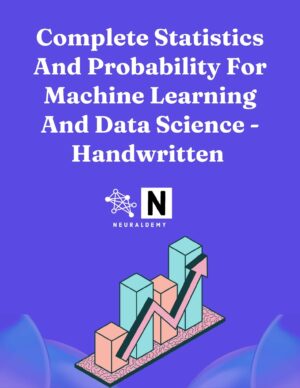TensorFlow Simplified Guide For Beginners
TensorFlow is an open-source machine learning library developed by the Google Brain team. It provides a comprehensive set of tools and capabilities for building and deploying various machine learning and deep learning models. This is a TensorFlow Simplified Guide for Beginners who are taking our tutorials on deep learning. It is made available free for all.
Features:
- TensorFlow offers a flexible and scalable platform for building machine learning models, particularly deep neural networks.
- It supports both CPU and GPU computation, allowing for efficient training of large-scale models.
- TensorFlow provides high-level APIs for quick model development as well as lower-level APIs for fine-grained control over model architecture and training.
- TensorFlow is widely used in various applications, including computer vision, natural language processing, and reinforcement learning.
Keras:
Definition: Keras is an open-source high-level neural networks API written in Python. Originally developed as an independent library, Keras has been integrated into TensorFlow as its official high-level API since TensorFlow version 2.0.
Features:
- Keras provides a user-friendly interface for designing, training, and deploying neural networks. It aims to be user-friendly, modular, and extensible.
- Keras supports both convolutional and recurrent neural networks and can be seamlessly integrated with other popular machine-learning libraries.
- With TensorFlow as its backend, Keras benefits from TensorFlow’s computational efficiency and scalability.
- Keras abstracts away many of the complexities of TensorFlow, making it easier for researchers and practitioners to quickly prototype and experiment with deep learning models.
Table of Contents
-
Sale Product on sale
 Linear Algebra For Machine Learning And Data Science
Linear Algebra For Machine Learning And Data Science40.00$Original price was: 40.00$.24.99$Current price is: 24.99$. -
Sale Product on sale
 Probability and Statistics for Machine Learning and Data Science
Probability and Statistics for Machine Learning and Data Science30.00$Original price was: 30.00$.19.00$Current price is: 19.00$.
Here is the tutorial for you:
Tensorflow Simplified Guide Part 1:
Try to code along to learn in the best way possible.
Tensorflow Simplified Guide Part 2:
Keras Simplified Guide
Keras is the high-level API of the TensorFlow platform. It provides an approachable, highly productive interface for solving machine learning (ML) problems, with a focus on modern deep learning. Keras covers every step of the machine learning workflow, from data processing to hyperparameter tuning to deployment. It was developed with a focus on enabling fast experimentation.
Keras is designed to reduce cognitive load by achieving the following goals:
- Offer simple, consistent interfaces.
- Minimize the number of actions required for common use cases.
- Provide clear, actionable error messages.
- Follow the principle of progressive disclosure of complexity: It’s easy to get started, and you can complete advanced workflows by learning as you go.
- Help you write concise, readable code.
This tutorial may not be very important because I will explain a few basics in the deep learning tutorial section.
Amritesh Kumar
I believe you are not dumb or unintelligent; you just never had someone who could simplify the concepts you struggled to understand. My goal here is to simplify AI for all. Please help me improve this platform by contributing your knowledge on machine learning and data science, or help me improve current tutorials. I want to keep all the resources free except for support and certifications. Email me @amriteshkr18@gmail.com.



